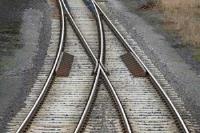 Add My Company
Add My Company
Sign In
Research into rail switches at the IRR
27-05-2015

Rail switches or ’points’ are used in the rail industry to guide trains to their correct route. They work by using a tapered set of rails (points) lying between the outer rails that can be moved to direct the train travelling across them.
They make up less than 1% of the entire length of railway routes in the UK, yet they account for 20% of the expenditure on track maintenance. With a working life of approximately 3 years, frequent maintenance and replacement of rail switches is needed to avoid disruptions in services.
The blades of rail switches are made of thinner rail and so are more prone to wear and tear. That combined with carrying very heavy loads at high speed means a short shelf life.
Huddersfield University’s Institute of Railway Research (IRR) is therefore currently working on developing switches that can last longer and need less maintenance.
They are using computer based systems to develop and optimise designs for switches, exploring whether tailor made switches can be made according to location, amount and nature of rail traffic. This could, in turn, make the switches more resilient and therefore reduce the amount of maintenance and replacement.
The Huddersfield IRR work is part of an £8.5m project called Track to the Future. It is working alongside Southampton, Birmingham and Nottingham universities in 3 areas of improvement. One is to develop long-life tracks and another is to develop low noise tracks. The Huddersfield Institute is taking the lead in the part of the project dealing with switches and crossings.
Director of the Institute Professor Simon Inwicki said ‘One approach is to develop optimised designs for switches. A new layout and geometry could improve the support for wheels and gradually reduce the pressure they exert as they cross the transition point’
The IRR will also consider a more sophisticated use of materials, resulting in what Professor Iwnicki describes as “a tuned variation in geometry and material properties”.
“Instead of just having a simple cross-section and a standard material right the way through, we might decide to optimise the way that the material is put through the switch, and the geometry of it.”
The institute has already worked with manufacturers to help them understand key issues with new installations and take appropriate action to reduce immediate spend and also later maintenance costs.
For more information on Research into rail switches at the IRR talk to PRV Engineering Ltd
Enquire Now
More News
List your company on FindTheNeedle.

